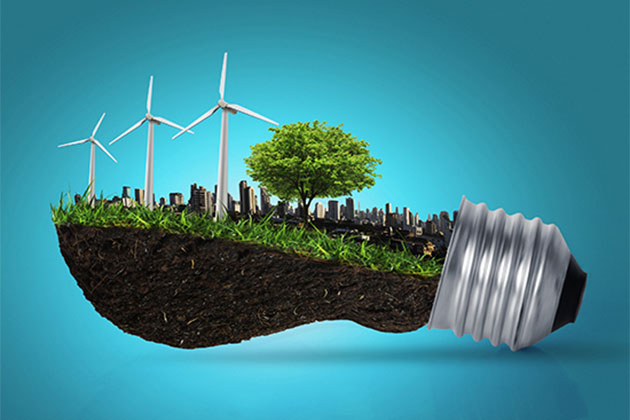Scientists have shown a new technology in which bioengineered bacteria can make cost-effective chemicals/polymers from renewable álversins Heimildir
lignín is a material which is a constituent of cell wall of all dry land plants. It is the second most abundant natural polymer after cellulose. This material is the only polymer found in plants which is not composed of carbohydrate (sykur) monomers. Lignocellulose biopolymers provide shape, stability, strength and rigidity to plants. Lignocellulose biopolymers consist of three main components: cellulose and hemicellulose form a framework in which lignin is incorporated as a kind of connector thus solidifying the cell wall. Cell wall lignification makes plants resistant to wind and pests and helps them from rotting. Lignin is a vast but very underutilized renewable resource of energy. Lignin which represents up to 30 percent of the lignocellulose biomass is an unexploited treasure – at least from a chemical point of view. The chemical industry depends mostly on carbon compounds for creating different products like paint, artificial fibres, fertilizers and most importantly plastic. This industry does use some renewable resources like vegetable oil, starch, cellulose etc but this comprises only 13 percent of all compounds.
Lignin, efnilegur valkostur við jarðolíu til framleiðslu á vörum
In fact, lignin is the one and only source of renewable on earth that contains a large number of aromatic compounds. This is of importance because aromatic compounds are generally extracted from the non-renewable source petroleum and then are used to produce plasti, paints etc. Thus, the potential of lignin is very high. In comparison to petroleum which is a non-renewable fossil fuel, lignocelluloses are derived from viður, straw or Miscanthus which are renewable sources. Lignin can be grown in fields and forests and are generally neutral towards the climate. Lignocelluloses is being considered as a serious alternative to petroleum in past few decades. Petroleum drives the chemical industry at present. Petroleum is a raw material for many basic chemicals which are then used to produce useful products. But petroleum is non-renewable source and is dwindling, therefore focus needs to be on finding renewable sources. This brings lignin into the picture as appears to be a very promising alternative.
Lignín er fullt af mikilli orku en að sækja þessa orku er flókið og dýrt ferli og þar af leiðandi framleitt lífeldsneyti þar sem lokaniðurstaðan er almennt mjög dýr og getur ekki komið í stað „flutningsorku“ sem nú er í notkun. Margar aðferðir hafa verið rannsakaðar til að þróa hagkvæmar leiðir til að brjóta niður lignín og breyta því í verðmæt efni. Hins vegar hafa nokkrar takmarkanir takmarkað umbreytingu snertiplöntuefnis eins og ligníns í að vera notaður sem annar orkugjafi eða jafnvel reynt að gera það hagkvæmara. Nýleg rannsókn hefur tekist að hanna bakteríur (E. Coli) til að virka sem skilvirk og afkastamikil frumuverksmiðja. Bakteríur vaxa og margfaldast mjög hratt og þau þola erfiða iðnaðarferla. Þessum upplýsingum var blandað saman við skilning á náttúrulegum tiltækum lignínniðurbrotsefnum. Verkið var gefið út í Proceedings of the National Academy of Science USA.
The team of researchers led by Dr Seema Singh at the Sandia National Laboratories solved three main problems that are encountered in turning lignin into platform chemicals. The first major hurdle is that bakteríur E.Coli generally does not produce the enzymes which are needed for conversion. Scientists tend to solve this problem of making enzymes by adding an “inducer” to the fermentation ring. These inducers are effective but are very expensive and thus do not fit well in the concept of biorefineries. Researchers tried a concept wherein a lignin derived compound like vanilla was used as a substrate as well as an inducer by engineering the bakteríur E.Coli. This would bypass the need for an expensive inducer. Though, as the group discovered, vanilla wasn’t a good choice particularly because once lignin breaks down, vanilla is produced in large quantities and it starts inhibiting the function of E.Coli i.e. vanilla starts creating toxicity. But this worked in their favour when they engineered the bakteríur. In the new scenario, the very chemical that is toxic to the E.Coli is used to initiate the complex process of “lignin valorisation”. Once vanilla is present, it activates the enzymes and bacteria starts to convert vanillin into catechol, which is the desired chemical. Also, the amount of vanillin never reaches the toxic level as it gets autoregulated in the current system. The third and final problem was of the efficiency. The system of conversion was slow and passive thus researchers looked into more effective transporters from other bacteria and engineered them into E. Coli which then fast tracked the process. Overcoming toxicity and efficiency problems by such innovative solutions can help make the production of biofuel a more economical process. And, removal of an external inducer along with incorporation of auto-regulation can further optimize the biofuel-making process.
Það er vel staðfest að þegar lignín er brotið niður hefur það getu til að útvega eða öllu heldur "gefa" verðmæt efni sem hægt er að breyta í nælon, plast, lyf og aðrar mikilvægar vörur sem nú eru unnar úr jarðolíu, ekki -endurnýjanlegur orkugjafi. Þessi rannsókn er mikilvæg til að vera skref í átt að rannsóknum og þróun hagkvæmra lausna fyrir lífeldsneyti og lífframleiðslu. Með því að nota lífverkfræðitækni getum við framleitt meira magn af efnum á vettvangi og nokkrar aðrar nýjar lokaafurðir, ekki bara með bakteríu E.Coli heldur einnig með öðrum örveruhýslum. Framtíðarrannsóknir höfunda skulu beinast að því að sýna fram á hagkvæma framleiðslu þessara vara. Þessar rannsóknir hafa gríðarleg áhrif á orkuöflunarferli og aukið úrval af möguleikum fyrir grænar vörur. Höfundarnir benda á að í náinni framtíð ætti lignósellulósa örugglega að bæta við jarðolíu ef ekki skipta um það.
***
{Þú getur lesið upprunalegu rannsóknarritgerðina með því að smella á DOI hlekkinn sem gefinn er upp hér að neðan á listanum yfir tilvitnaðar heimildir}
Heimildir)
Wu W o.fl. 2018. Í átt að verkfræði E. coli með sjálfstýringarkerfi fyrir lignín valorization', Málsmeðferð um National Academy of Sciences. 115 (12). https://doi.org/10.1073/pnas.1720129115






































